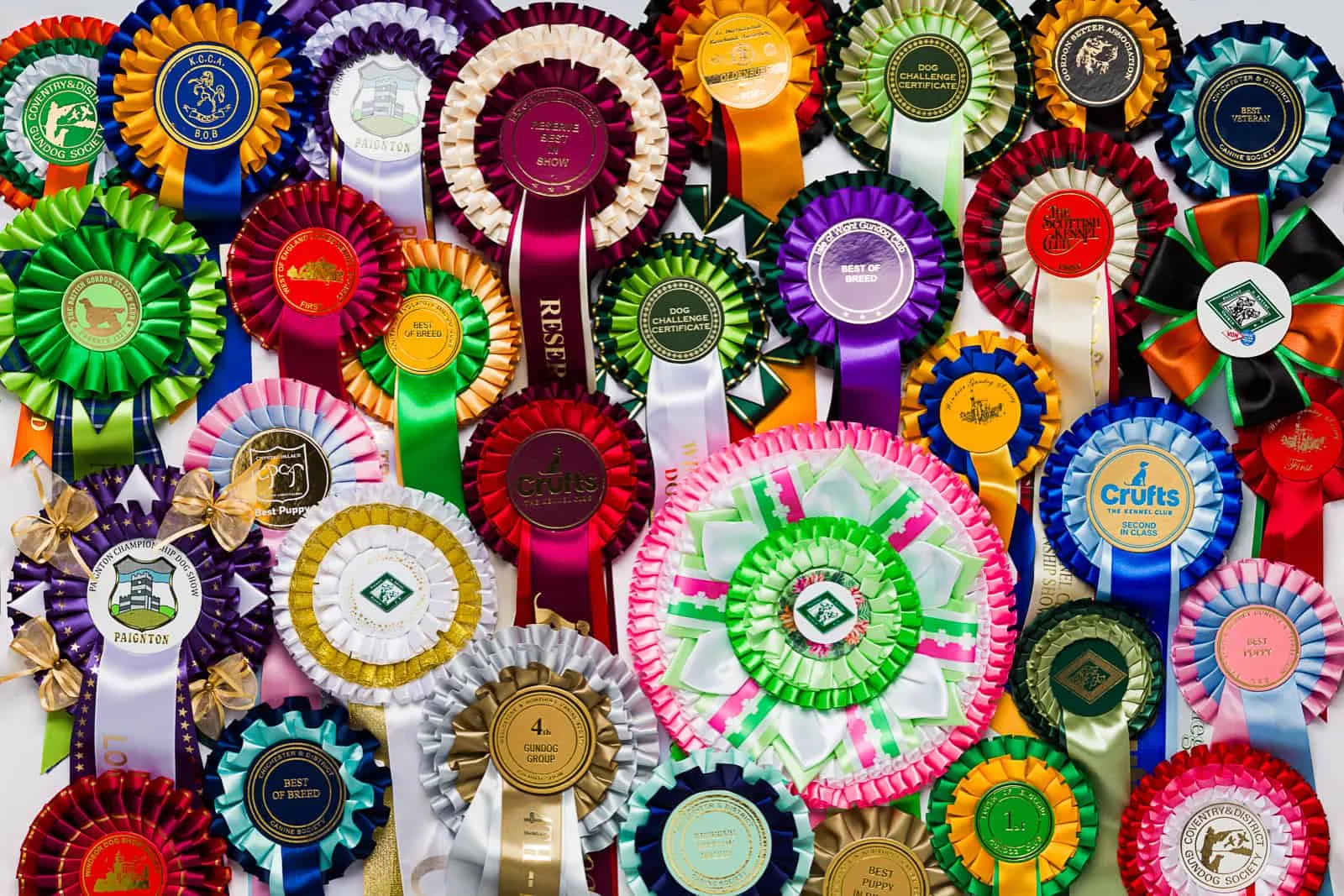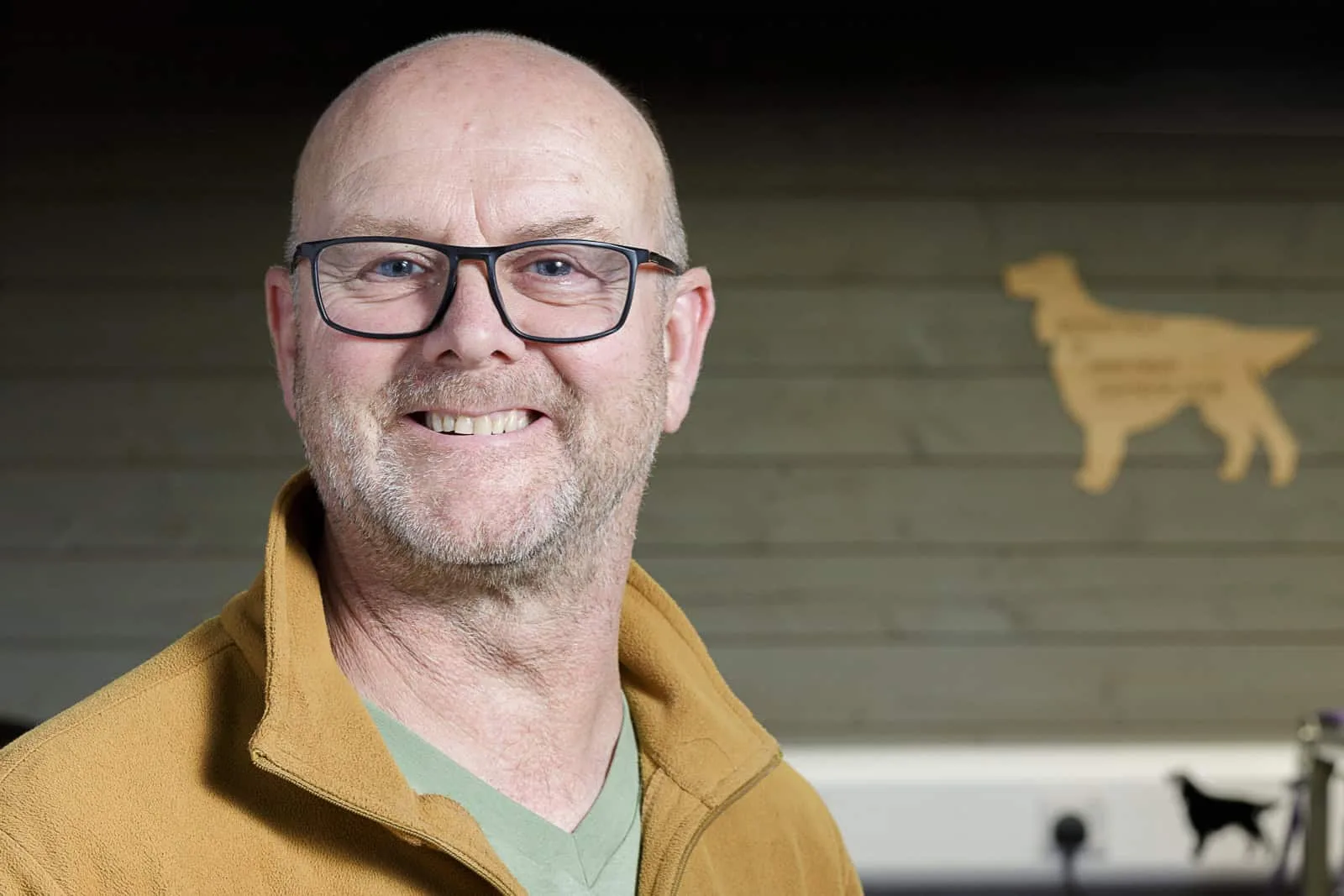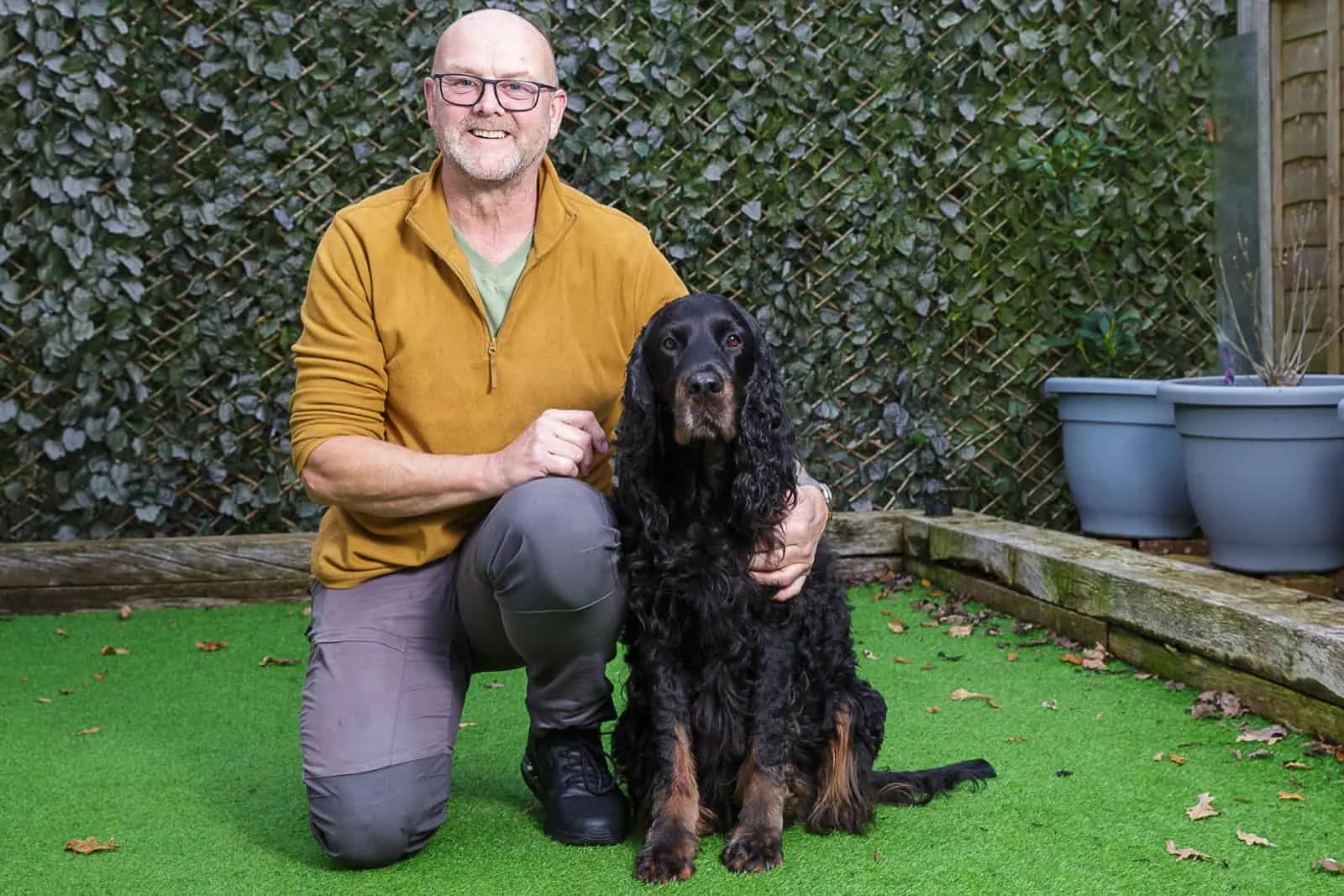In this final part of Keith’s story, we explore the challenges and highlights of being…
Ham and Chips

Talk radio
Brian likes to talk. Not just a little, but a lot. And I do mean a lot. In fact he likes to talk so much that he’s made a hobby of it …
Amateur Radio or ‘Ham Radio’, as it is often affectionately called, has a world wide following of over 2 million operators. The word “Amateur” is often used in a disparaging way to mean “lacking professional skill and ease in a particular pursuit”. However, the true meaning of this word is “done out of love” I, and most radio amateurs are really radio ‘experts’. Ham Radio operators are self-trained hobbyists who are always increasing their knowledge of electronics and radio theory, while enjoying the privileges of access to the airwaves.

With a degree in pure mathematics, Brian originally joined a large insurance company to be a trainee actuary. But, having discovered that, as he jokes, “the sole purpose for an actuary to exist is to make chartered accountancy seem exciting”, he was soon looking for other options. He moved into computer programming and later joined IBM, which was a better fit for his talents and interests. A visit to a computer fayre with a friend and radio enthusiast, in the early 1990’s, prompted the purchase of a small radio receiver. With a very simple set up, extending a wire down the length of his garden to act as an aerial, he heard a transmission from Paraguay. This was enough to get him hooked.

You would think that after nearly twenty years of being an amateur radio enthusiast or ‘radio ham’, Brian would have very little left to say. But nothing could be further from the truth. In an age where social networking has been defined by Facebook, Twitter and all manner of computer based communication, radio enthusiasts have been ‘twittering’ over the airwaves since the 1910’s. Social media relies on bite-size chunks of information, in Twitters case, a one hundred and forty character maximum text message or tweet, and ham radio is not dissimilar. Very often, the ‘conversation’ will be a short acknowledgement of another operator and a very brief statement of where they are based. There are no strict rules on a conversation’s duration, but solar conditions will determine the practicalities of making contact in the first place. All exchanges are recorded in log books or by using dedicated computer software applications and contribute towards an operators tally of unique call signs to whom they have spoken.


The thriving ham radio community likes nothing better than to compete against each other to see who can collect the highest number of call signs for a given period. These are often internationally held competitions, where the participants can be very serious about winning. Some clubs, especially those in the USA, can command extraordinary resources in an effort to win competitions. They have been known to set aside several acres of land for dedicated aerials and transmission masts. There are usually around four of the larger competitions each year with numerous smaller ones; often as many as one a week. It is possible to compete as an individual, but it’s more likely to be a club entry. A good contest even a modest station is likely to ‘work’, in the radio ham vernacular, at least 70 different countries at a time. However, Brian and Liz are more interested in the social aspect of the hobby, and giving back to the community, than they are about competing at this level.

Before you can transmit, rather than just listen, on amateur radio, operators are required to pass a licensing exam. They must display knowledge and understanding of key concepts and have a basic understanding of electronics. When Brian first started, there was a requirement for operators to be able to read and transmit morse code at 12 words per minute. Although this speed is no longer a necessity, there has been somewhat of a resurgence in interest for wireless telegraphy in recent years. In 1993, Brian gained his license after attending night school for twenty weeks. And, in a strange twist of fate, his first radio ‘contact’ was a lot closer to home than he expected.
In those days” Brian says, “you had to wait until you had received the actual physical notification, in the form of a pass certificate, before you could officially transmit. Having already bought a small handheld radio, I was keen to get under way, so I telephoned the Radio Communications Agency to determine where the certificate was. Liz, my wife, and I were away walking in the New Forest because our daughter had gone to a Girl Guides camp nearby, but I thought I would check how far it had progressed through the system. When I got through, I was told that the they had literally posted it that very morning and, as far as they were concerned, I was now legal to transmit. So, of course, I turned on and tuned up as soon as I got off of the telephone. Fumbling around, I came across the nearest station, which turned out to be the local Girl Guide camp in Romsey, Hampshire, just up the road from where we were. After the initial opening conversation, the guide camp operator said that he was pleased to be my first contact and asked “I know that you’re new, but would you be confident enough to talk to one of the young ladies here in the camp?” Of course, I said yes. The operator passed the microphone to the first Girl Guide, who opened with the greeting “hello daddy”. “It was my daughter, who just happened to be in the radio shack at the same time as my very first transmission.

Brian’s wife Liz, who works part time for the bespoke audio-visual equipment baggage company, KT Systems – http://www.ktsystems.co.uk/ based iclose to their home in Chandlers Ford, has been involved with the Girl Guides, either as a member or volunteer worker, since she was seven years old. Liz is the national ‘Thinking Day on the Air’ coordinator for Girlguiding UK (TDOTA). TDOTA is an opportunity for the members of the Guide Association, from the youngest Rainbow to the oldest Trefoil Guild member, to talk to other members of the World Association of Girl Guides and Girl Scouts all over the world via Amateur Radio. The event is held once a year, on the anniversary of the Scouts founder Lord Baden Powell’s birthday, usually over a weekend, and has been a runaway success. As a qualified radio operator herself, she is keen to promote the pastime and involve women, in such a male dominated hobby, as much as possible. The Boy Scouts have similar events with ‘Jamboree On The Air,’ now in its 53rd year. Last year, the Girl Guides celebrated their silver anniversary at a mere 25 years of transmitting! Despite the use of modern computing methods for logging and, in some cases, highly sophisticated radio equipment, there is an air of ‘old-school’ sensibilities about some areas of Ham Radio. Male radio operators are given the monicker of OM or ‘Old Men’ whilst YL or ‘Young Ladies’ is use for there female counterparts. These terms are applied irrespective of age. So a young lad of fifteen is still referred to as an ‘Old Man’ and a female pensioner remains a ‘Young Lady’. The exception to this is when a YL gets married. At which point she becomes an XYL ‘Ex Young Lady’.

For every contact that is made, a QSL card is sent. QSL is one of the Q codes used in radio communication and radio broadcasting. A Q code message can stand for a statement or a question. In this case, QSL means either “do you confirm receipt of my transmission?” or “I confirm receipt of your transmission”. A QSL card is a written confirmation of that transmission or contact. A typical QSL card is the same size and made from the same material as a typical postcard, and most are sent through the mail via the governing body for amateur radio, the Radio Society of Great Britain (RSGB). Each operator has cards of their own design, with their unique call sign printed on it. On a very, very good weekend, as many as five or six hundred contacts might be made.

Brian and Liz both belong to a local ham radio club, the ‘Itchen Valley Amateur Radio Club’ (IVARC) for which Brian is the web master. Some of the sixty-plus club members are often drafted in to assist with setting up temporary radio stations at guide camps around the country. The club has a trailer with a 27ft lattice tower mast and various mobile antennas. After they install VHF, HF and LF transmitters and amplifiers, the girls, under supervision, are able to transmit greetings messages around the world to other guide camps and participating radio hams. The club meets twice monthly in the flesh and has weekly ‘on air’ meetings.
In 2009, Brian accompanied Liz to the Falkland Islands, where she was part of an international group of YL’s, from six different countries, participating in the ‘SA-002 DXpedition’ from January 17th to 31st. Between them, the nine YL’s made over 25,000 contacts, of which 3,500 were attributed to Liz. The ladies took turns, in six-hour shifts throughout the day and night, and spoke to over 150 countries around the world, as well as at least one person in each of the 50 United States.
Due to take early retirement this year, Brian has plenty of plans to keep himself occupied. Quite apart from his other numerous hobbies, he and Liz plan to do some travelling in their recently acquired camper van. Apart from seeking open spaces in the UK, (noise) pollution free areas for better radio reception, they have a European tour pencilled in. A trip to Friedrichshafen, a town on the northern side of Lake Constance (the Bodensee) in Southern Germany, near the borders with Switzerland and Austria is on the books. The three week journey in June, driving through France and Switzerland with a stop over in Liechtenstein, will see (or should that be hear) them transmitting all along the route. The final destination is the location of Europe’s largest Ham radio convention. This trip has been a long held dream after attending the worlds largest convention in Dayton, Ohio where there were over a quarter of a million attendees during the four-day convention. This trip will complete the set.

Being an inveterate ‘tinkerer’, Brian’s on-going love affair with self appointed electronic projects will keep him busy as well. Having built his own 10W radio from a kit, taking roughly eighty hours to construct, he is not adverse to breaking out the soldering iron, something else that he collects from car boot sales. The home-built transmitter/receiver, now worth over £1000 in todays money, is his pride and joy – and rightly so. It’s a wonderful piece of engineering, which has seen plenty of real world use. So far, he has logged contacting 177 countries and aims to break 200 in the very near future. It may only be 10 Watts in power, but with the right atmospheric conditions he has been able to reach operators as far afield as Tasmania and Antrarctica with ease.


So, if you listen carefully on a clear night, you might just hear the sound of G0UKB (Golf Zero UK Brian) or M0ACL (Mike Zero A Clever Liz) calling out over the airwaves.
Additional links of interest
The national association for amateur radio
The international amateur radio union



